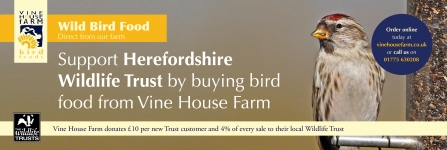Autumn is an especially busy and important time in the wildlife garden, as it gives the opportunity to help a host of different species across different classes of animal – e.g. invertebrate, amphibian, mammal, reptile and bird – to get through the winter. Of course some species in these classes hibernate, but for others – and certainly for all species of garden bird – it’s largely about getting enough food and shelter to ensure body weight is maintained and therefore surviving to breed in the spring.
These are our top four pointers to consider for your wildlife garden in the next few months:
Don’t cut back all the dying foliage on perennial plants
Although cutting back perennials as they start to die off might seem the right thing to do, pruning too harshly removes an important habitat for invertebrate in the winter months. This in turn means less natural food for ground feeding birds such as blackbird, robin, song thrush and dunnock. A good compromise is to cut down large stems and flower heads but leave plenty of foliage at or near to ground level. The other advantage of doing this is that it creates compost and therefore nutrients for the plant next spring when it starts to grow again, plus protects new shoots from late frosts.
Pile up leaves and other vegetation as an open compost heap
Most compost heaps are in some sort of enclosure or container with a lid on, which is of course a great way to create free compost for future planting. However, open compost heaps, whilst not as efficient for such production, do provide a much more usable habitat for hibernation. This can be for invertebrates, amphibians and some mammals (notably hedgehogs if the pile is big enough). In addition, even in very cold weather it’s likely that a bird such as a song thrush will be able to pull off parts of a frozen surface to get at warmer material below which harbours invertebrates. You can use the dead foliage from the perennials, but the best material for volume is fallen leaves. For location, pick a corner of the garden that is relatively sheltered from wind, so the leaves don’t get blown back onto the lawn. Using branches and twigs around the outside, and on top of the heap, also helps retain the material as it starts to rot down.
The perfect time to put up nest boxes
As the name suggests, the principle purpose of nest boxes is of course for birds to nest in. But actually their other huge value is that they provide a safe and relatively warm place for a number of species to spend the long cold nights – and notably wrens and species in the tit family. This in turn leads to a greater survival rate, and therefore more birds are able to breed in the spring. Selecting the right nest boxes and locating them in the right place is simple enough once you know the basics which we set out here – and be sure to watch the short video.
Get your bird feeders ready for an influx of birds and including winter migrants
If you haven’t done so for a while, then getting feeders clean is super-important to the health and survival of the birds which visit your garden. We realise of course that it isn’t the most fun of jobs, but with the right approach and materials it really doesn’t take too long – more details here.
Many gardens have an influx of both the usual, common bird species and ones that are winter migrants to our shores – e.g. the brambling. For the influx of the common species, this often takes place because the birds are also migrating here from northern mainland Europe (in particular Scandinavia), with species including chaffinch, blackbird and even the much-loved robin. Indeed, the robin you see feeding on your patio in December might have flown all the way from Russia to get there.
Of course more birds to your garden means more food consumed, plus it’s also important to provide the right types of food and a mix of feeders to suit different species. This is a fairly weighty subject, so if you want to find out more then have a watch of our highly successful video – which has already notched-up over one million views!
We hope you’ve found this information useful, and also very much hope you enjoy your wildlife garden this autumn.


